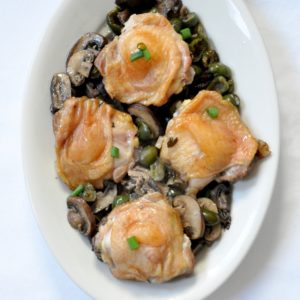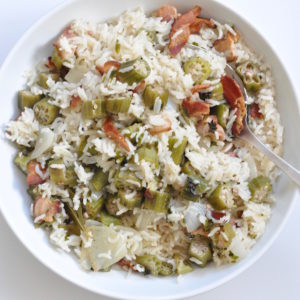Baked Ricotta
My husband plays a sport called power soccer. This is soccer for those in power wheelchairs: a metal object called a guard, resembling the grille on a Toyota Landrover, is screwed to the front the wheelchair. Players use the guard to hit a regulation power soccer ball either head-on or by spinning their chairs in a dazzling series of motions called spin kicks. This no twee pastime; power soccer requires serious athletic skills, for the best players maneuver their wheelchairs whilst simultaneously passing the ball around a regulation basketball court. All this amidst an opposing team angling to get the ball off them. Players must must also mind teammates, goalies, and the referees. All this at a top speed 6.2 miles an hour.
Sound easy? Ever tried negotiating a power chair? Ever tried running backward at top speed in a power chair with a soccer ball, with only your teammates’ verbal coaching to guide you? I once watched my husband do this down entire gym. My heart was in my throat. He didn’t miss a beat.
The finest power soccer players are like any other athletes: world class. And once they get off the court, they’re hungry.
For years I’ve brought food to power soccer events. It’s some of the most challenging catering I’ve ever encountered. Not because players are picky or less than gracious about the potluck offerings at meets–off court, all pretense of competition fades as game enemies sit together, sharing meals and a good time. But living as I do with a disabled mate, I am acutely aware of the hazards and humiliations eating can mean to a disabled individual. And while I can’t claim to have all the answers, I try to provide foods that are easily managed with a minimum of mess, crumbs, or drips.
If that food is something a caregiver or attendant can easily pick up and feed somebody else–incidentally, while shoving a piece into their own starving mouths, so much the better.
Baked ricotta fits the bill perfectly, and is vegetarian in the bargain. But the nice thing about baked ricotta is it’s delicious without feeling like a compromise to anyone–it’s just plain good, a winner no matter who you are feeding.
My recipe is a confluence of two: Tamar Adler has a recipe for baked ricotta in An Everlasting Meal. Mollie Katzen, a tremendous influence and wonderful teacher, uses ricotta cheese in much of her cooking. In Mollie Katzen’s Sunlight Cafe, she writes:
Ricotta is generally considering an ingredient and not an “eating” cheese.Usually made into something else, it rarely, if ever, gets to shine on its own.
Her recipes, including the one I adapt from here, go a long way to correct that.
Borrowing from both, this baked ricotta is flavorful yet gentle, good at any time of day. Katzen’s recipe is a breakfast option; Adler eats hers on “a lot of toast.” Me? I like it the way I like any cheese, which is any way at all: on bread, for lunch,with dinner, after dinner.
With those H-events looming on the horizon–let’s not name them quite yet–baked ricotta, which is good hot, cold, or at room temperature, is a handy recipe. It behaves well sitting around, won’t poison anybody, isn’t expensive or hugely caloric. And it’s easy to make.
Baked Ricotta
8-10 servings
one pound ricotta cheese
Scant 1/4 cup olive oil
1 egg yolk
scant 1/4 cup fresh herbs: chopped parsley, thyme, rosemary, mint: whatever you like
salt and black pepper to taste
Preheat the oven to 350 degrees F. Lightly oil a 9-inch pie plate with olive oil.
In a mixing bowl, mix ricotta, egg yolk, olive oil, herbs, salt, and pepper. Taste for seasoning: you want the cheese just slightly undersalted as most commercial ricotta is very wet: the cheese may weep during baking. This is okay.

Spread the cheese mixture in the pie plate.

Bake 35-45 minutes. Ricotta should be slightly puffed and browned along the edges. This takes 45 minutes in my oven. It may take slightly less in yours.

Remove from oven and allow to cool. Can be covered and stored in fridge 5 days.
Cooking notes: I like to use parsley and thyme; rosemary can be intense, and I am not fond of mint.
You can make this without the egg if you prefer. It will still be good.
How to get an egg yolk free of its white: gently crack egg into a small bowl. Have another small bowl handy. Carefully pour the yolk between shell halves, allowing the white to either drip heedlessly into the sink or into the bowl for another use. Drop yolk into small, clean bowl. Voila.





